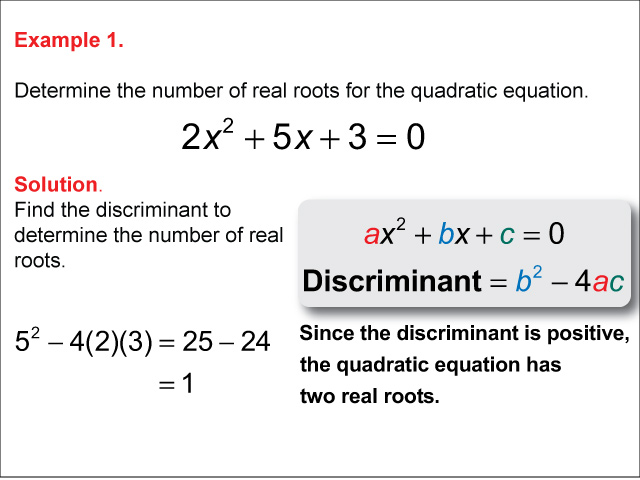
Display Title
Math Example--Quadratics--Calculating the Discriminant: Example 1
Display Title
Calculating the Discriminant: Example 1

Topic
Quadratics
Description
The image demonstrates the concept of the discriminant in quadratic equations. The discriminant, denoted as b2 − 4ac, is a key component in determining the nature of the roots of a quadratic equation ax2 + b x + c = 0. This example illustrates how different values of the discriminant can indicate whether the roots are real and distinct, real and equal, or complex. In this case the discriminant shows there are two real roots. By calculating the discriminant, students develop skills in algebraic manipulation and gain insights into the graphical representation of quadratic functions. Understanding the discriminant is crucial for solving quadratic equations and analyzing their solutions. This example involves skills such as identifying coefficients, performing arithmetic operations, and interpreting results. For a complete collection of math examples related to Quadratics click on this link: Math Examples: Quadratics Collection.
| Common Core Standards | CCSS.MATH.CONTENT.8.EE.A.2, CCSS.MATH.CONTENT.HSA.REI.B.4.B |
|---|---|
| Grade Range | 9 - 12 |
| Curriculum Nodes |
Algebra • Quadratic Functions and Equations • Quadratic Formula |
| Copyright Year | 2014 |
| Keywords | quadratic equations, solving equations, solving quadratic equations, the discriminant, discriminant, quadratic formula |